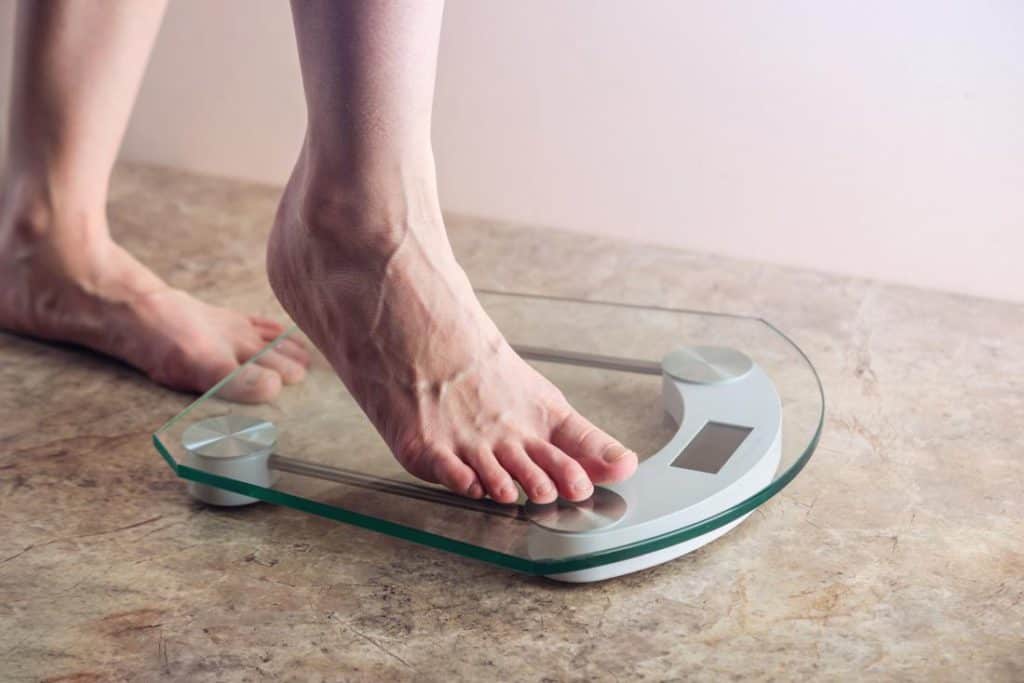Do you eat a low-carb or keto diet but don\’t see the outcomes you expected? Does your scale seem stuck, yet you think that you continue to have ample weight to lose? Lets read what to do when weight loss stalls.
We know it is often frustrating to see friends and family successfully losing weight and gaining health with a diet when you feel you\’re not.
You may wonder, “Am I doing something wrong? What else am I able to do? Is the eating plan right for me?”
But when does a weight stagnant period (which is expected) become a plateau? Weight loss plateaus are common, yet frustrating, part of the load loss process. If you’re stuck at a plateau while following a low carb or ketogenic diet, the ways given below will help.
But first, ask yourself if you’re truly at a plateau. Is it just a part of a weight stagnant period. Most people should expect it, at some point during their journey.
Am I stuck during a weight loss plateau?
Your weight will vary day to day—as very much like several pounds—due to normal fluctuations in body water. So watching weight every now and then is required. Dietary influences are just a few of the things that can impact weight. Additionally, drugs, hormones, exercise, and modifications of body structure affect weight. It\’s best to realize before further evaluation if what you\’re experiencing might be a real plateau or if it day-to-day variations in the weight.
WHAT TO DO WHEN WEIGHT LOSS STALLS ?
#TRACKING YOUR MACROS AGAIN.
- Once we\’ve been on a keto diet for a short time, we will often become comfortable and stop being as diligent in tracking our macros as we were once we began.
- Remember your macros should be 75% fats, 20% protein, and 5% carbs to urge into and remain in ketosis. When we let things slowly creep into our daily intake, these ratios can get out of whack.
# TRACK YOUR CALORIES
- It is seen that ladies struggle with caloric intake far more than men do. So maybe your macros are in order, but you\’re only eating too many calories. It\’s worth re-watching.
- On the other hand, if you cut your calories down too low your metabolism will get hampered. This is referred to as Adaptive Thermogenesis and can be a means of establishing coping mechanisms in our bodies to impact adverse circumstances. In this case, you really may need to slowly increase your calories to kickstart your metabolism.
# EAT REAL FOOD
- Relying on processed foods can stall your weight loss even if they\’re keto-friendly.
- Eating tons of convenience-type foods like hot dogs and foods when you\’re on the run can impede your weight loss. These foods are nutrient-poor, which means they have a lot of calories but little vitamins, minerals, or antioxidants.
- To optimize your nutrient intake while losing weight on the keto diet, stick with unprocessed, whole foods.
- For example, full-fat dairy products, eggs, fish, pastured meats, poultry and healthy fats like avocado and vegetable oil are all great choices.
- Be bound to add non-starchy veggies like greens, broccoli, peppers, and mushrooms to dishes to feature nutrients and fiber.
# PLAN YOUR MEALS before TIME
- It seems contradictory that to reduce you\’ve got to think more about your food, but if you plan out your meals before time you\’re far more likely to remain within your macros and calories goals and fewer likely to grab something unhealthy or compromise your keto diet.
# CONSIDER TRYING FAT BOMBS
- It might sound contradictory that if you\’re trying to reduce you\’d add high-calorie fat bombs to your diet. These are loaded with fats that curb your appetite and rev up your metabolism.
- Many people say that they give them an extra burst of energy during a workout and that they help them battle cravings for hours.
# TRY INTERMITTENT FASTING
- Once a body is in ketosis, fasting can play a crucial role in increasing insulin sensitivity and helping you to burn fat.
- If you haven\’t tried fasting before you\’ll start slowly with the 16/8 method which suggests you restrict all of your eating to eight hours per day and fast for the other 16 hours.
- You also can do a ‘fat fast\’ and cut out all of your fat for 1-2 days to restart your metabolism.
Conclusion
Along with other healthy lifestyle changes, the ketogenic diet is often an efficient weight-loss tool.
However, there are various reasons why some people may fail to assure the results they desire.
Overeating, inactivity, chronic stress, underlying medical conditions, and failing to adhere to the prescribed macronutrient ranges may all sabotage weight reduction. This article will give a good sense of what to do when weight loss stalls.
Get adequate sleep, minimise stress, be more healthy and eat complete, nutritious, low-carb foods whenever possible to optimise weight loss on a ketogenic diet.








